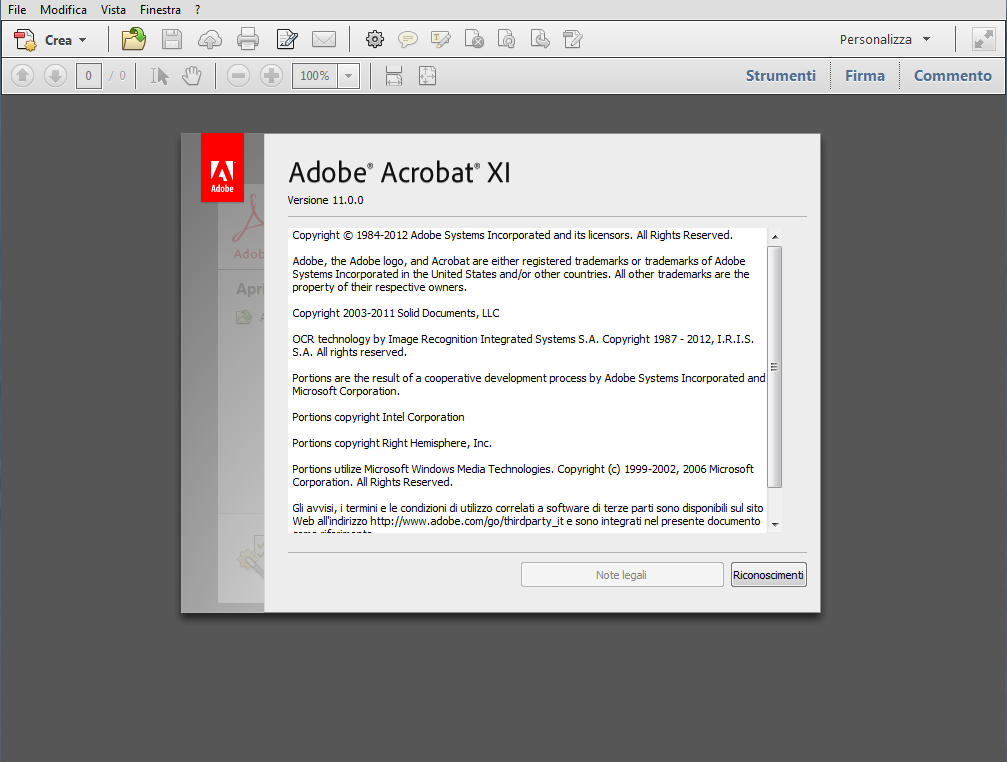

- ADOBE ACROBAT ON MAC MAC OS
- ADOBE ACROBAT ON MAC PDF
- ADOBE ACROBAT ON MAC DRIVER
- ADOBE ACROBAT ON MAC PRO
Acrobat Reader 5.1 – supported the Adobe LiveCycle Reader Extensions (e.g.Acrobat Approval 5.0 – a limited version of Acrobat, mainly sold to people who wanted to digitally sign or save fill in forms.
ADOBE ACROBAT ON MAC MAC OS
Acrobat 5.0.5 was the first to be able to run native in Mac OS X, but also ran in Mac OS 9. PDFWriter removed from Macintosh application Acrobat Business Tools 4.0 – a limited version of Acrobat.Īcrobat Reader 5.0 was released May 2001:.
 Introduced Distiller Server 4.0, identical to the regular Distiller but with a multi-user license (Windows, Linux, Solaris). Last release with support for Windows 3.1.Īcrobat Reader 4.0 was released April 1999: First release with support for Windows 95 and later. Updates to 3.01 and 3.02 3.02 introduced extended forms capabilities and JavaScript. Included Acrobat Catalog, and a Distiller printer driver. Acrobat 3.0 – replaced Acrobat Professional 2.1. A free Reader to allow searching was made available, but was not part of the default download.
Introduced Distiller Server 4.0, identical to the regular Distiller but with a multi-user license (Windows, Linux, Solaris). Last release with support for Windows 3.1.Īcrobat Reader 4.0 was released April 1999: First release with support for Windows 95 and later. Updates to 3.01 and 3.02 3.02 introduced extended forms capabilities and JavaScript. Included Acrobat Catalog, and a Distiller printer driver. Acrobat 3.0 – replaced Acrobat Professional 2.1. A free Reader to allow searching was made available, but was not part of the default download. ADOBE ACROBAT ON MAC PDF
The first to display PDF files in-browser, and the first to support form filling: Searching required a special :version of Acrobat Reader or Acrobat Exchange.Īcrobat Reader 3.0 was released 1996. technology to create searchable indexes to PDF files.
Acrobat Catalog was introduced, using Verity, Inc. Acrobat Professional 2.0, which included the contents of Acrobat Exchange, plus Distiller. ADOBE ACROBAT ON MAC DRIVER
Created a PDF from PostScript (no printer driver at this stage).Īcrobat Reader 2.0 for Windows and Macintosh was first released September 1994.
 Acrobat Exchange 1.0 (included PDFWriter printer driver and Acrobat Exchange application). After a while the IRS purchased a right to distribute Reader 1.0, effectively making it seem free to those who obtained it that way: This was not available in single copies and was not initially free. Adobe also allows Acrobat plug-ins to be developed by third parties, which can add extra functions within the Acrobat program.Īcrobat Reader 1.0 for Macintosh was originally released 15 June 1993, later for DOS and Windows 3.1. Today, there are a host of third-party programs that create or manipulate PDF, such as Ghostscript, Foxit, and Nitro PDF. This in turn has led to *many more competitors for Adobe Acrobat, both free and commercial.
Acrobat Exchange 1.0 (included PDFWriter printer driver and Acrobat Exchange application). After a while the IRS purchased a right to distribute Reader 1.0, effectively making it seem free to those who obtained it that way: This was not available in single copies and was not initially free. Adobe also allows Acrobat plug-ins to be developed by third parties, which can add extra functions within the Acrobat program.Īcrobat Reader 1.0 for Macintosh was originally released 15 June 1993, later for DOS and Windows 3.1. Today, there are a host of third-party programs that create or manipulate PDF, such as Ghostscript, Foxit, and Nitro PDF. This in turn has led to *many more competitors for Adobe Acrobat, both free and commercial. 
By the late 1990s PDF had become the de facto standard, and the others had become largely historical footnotes.Since the early 1990s, the Acrobat product had several competitors who each used their own document formats, such as: Adobe Acrobat Reader DC, a free client version with the ability to print, sign, and annotate.Īdobe Labs has also produced the Adobe Acrobat Cleaner Tool to remove previous or corrupted installations of Acrobat.Adobe Acrobat 2020, the last version sold through one-time perpetual license, but without cloud features.
ADOBE ACROBAT ON MAC PRO
Adobe Acrobat Pro DC, includes the ability to convert scanned documents and add media files. Adobe Acrobat DC, sold only by subscription through Adobe Document Cloud with mobile app support. Between versions 3 and 5, the Standard and Professional versions were one unified product simply called Adobe Acrobat.Īs of June 2020, the main members of the Adobe Acrobat family are: This has caused confusion over which product a user has or needs to obtain. 3.2 Specific Features for Arabic and Hebrew languagesĪdobe has reorganized the products in the Acrobat family over the years by splitting, merging, or replacing applications. 3 Internationalization and localization.








 0 kommentar(er)
0 kommentar(er)
